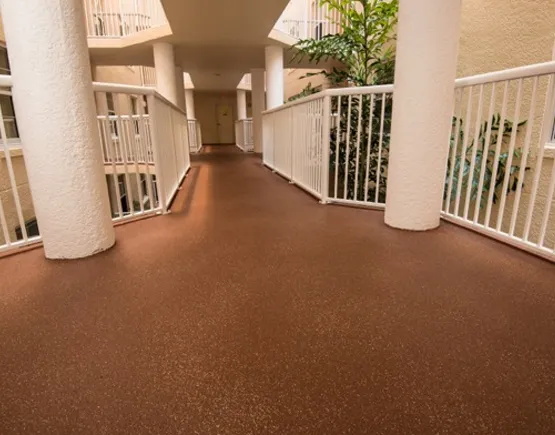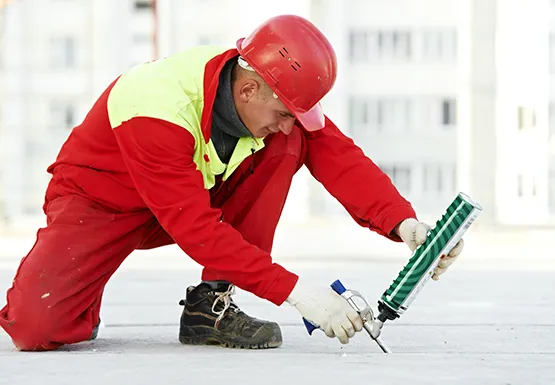What may seem to be a simple and mundane paint job on the exterior elevations of a high-rise structure is, in fact, a complex combination of different products and application methods designed to seal the building envelope.
A careful study and analysis of existing leakage from both window & door openings, thermal & structural cracking, failure of joint materials, and porosity of the vertical walls will reveal the work scope necessary to adequately seal the building. Long-term remedies pay for themselves many times over and should be the manner necessary to approach a project.
One must choose between the benefits of 20 mil or 10 mil elastomeric coatings, and the benefits of 100% acrylic coatings, all of which offer different exterior characteristics. Elastomeric coatings are very soft in nature, and therefore produce a coating which can harbor dirt and mildew. Acrylic coatings, on the other hand, are much harder at the surface, and consequently stay cleaner longer, but have a tendency to crack under stress conditions and therefore do not provide a waterproof surface. A combination approach, a soft stretchable base coat, followed by a harder protective surface, will provide building owners with the best of both worlds.


The urethane boom has given us many products in the construction industry, and one of the most interesting is the use of hydrophilic urethane injection materials. This material is used to seal water leaks through slabs, walls, and other surfaces where positive side waterproofing is not an option. Negative side waterproofing can be a tremendous money saving method of controlling water leaks. The urethanes on contact with water expand and actually chase the water source to completely seal the crack or hole. The down-side to this approach is that in 99% of the cases, we are unable to physically see the cavity into which we are injecting, and therefore have no idea as to how much material any one injection can take.

In our world of condominiums, many developers have planters and other grass areas that are over the main concrete deck. At the time of construction, these areas are waterproofed, but many of the materials used have a fairly short life span. Urethane coatings impregnated with bitumen and other such chemicals provide a soft elastomeric membrane that will adhere to both the retaining walls and the concrete deck, providing a seamless waterproofing system. A further benefit is the use of protection board which can be laid against the coatings prior to the backfilling of soils and other planter materials.

The world of caulking (sealants) keeps improving with the products better able to accept our climate and the constant thermal movement. The great array of products all have their place in the industry, but the hard work has long been the domain of plural component polyurethanes. Some of the latest innovations have however challenged urethane’s superiority. R&J Coatings and Waterproofings’s staff pride themselves in using the very best products available.

Once concrete has been repaired and suitably cured, it is time to “protect the investment.” There are many coatings available for pedestrian or traffic surfaces. The long-term favorite for balconies and elevated walkways is Polyurethane coatings. These provide a high level of waterproofing and have an elastomeric benefit. (An ability to accept minor thermal movement and cracking without tearing)
In addition, acrylic coatings can provide an easy to clean finish coat, which is easily reapplied when necessary. The acrylics will also offer decorative possibilities as opposed to the urethan finish which is predominately one standard color.
Traffic decks provide many more challenges as the weight of the vehicles and turning of the wheels cause additional stresses compared to pedestrian decks. While the theory is the same for an elevated structure:
A. Repair and waterproof using multi coat urethanes
B. Protect the waterproof membrane for a minimum 5-year period
How can we best achieve this goal? The long-term success involves retaining the aggregate surface for an extended period. This is the best achieved using epoxy binders and multiple aggregate applications.